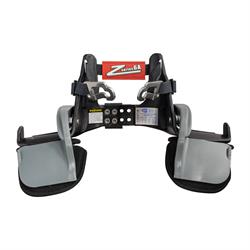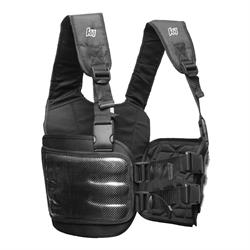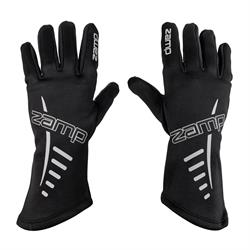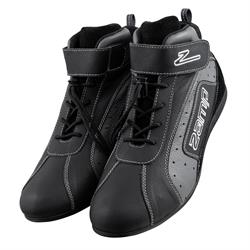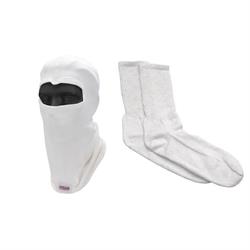Karting Safety Equipment Guide
The Starting Point of Many a Racing Career
It is well known that many an F1 driver got their competitive start racing karts. Names like Senna, Schumacher, Vettel, and more made kart racing their first foray into road course racing in their youth. Today, kart racing has expanded to include “cage carts” which see dirt track racing and have become extremely popular in the Midwest where kart racing helps draw in racers of all age groups to hit the track on a Saturday night. The crowds love seeing a full field on track, which is tough in higher level (and more expensive) racing classes.
Be it an open flat kart or cage kart, once you’ve purchased your race ready machine your very next consideration must be your safety gear. Just because it is a “go-cart” to some does not mean that there isn’t inherent danger racing these machines. Due to your lower seating position, lack of any suspension (the frame itself is technically the kart’s suspension), and their speed capability means that safety gear should be always worn, even during solo test sessions around the yard or up and down the street. Essentially any time you put your butt in that kart’s seat you should be wearing your safety gear. With over 10,000 karting injuries reported in the US alone every year, it is essential that you protect yourself
Just what safety equipment you should be using is somewhat dependent upon the type of kart you are racing, the track’s individual safety rules, and those of any sanctioning body you run under. Frankly, wearing the bare minimum to be legal and allowed to race is something we are not fans of, though we know it happens across all forms of motorsports. If you really think about it, your safety gear is that “barrier” that allows you a greater chance of walking away unharmed from an on-track mishap and seeing your family again. Isn’t that worth a little more investment or wearing that extra piece of racing gear? We think so. There are numerous brands, like K1 Speed (the big indoor karting company) that offers safety gear options through its K1 Race Gear product line. We also carry Zamp, Simpson, and other brands to fit any racer and any budget. Let’s start at the head and work down, looking at the safety equipment you should be using.
What Type of Helmet Do You Need for Karting?
Be it asphalt or dirt, using a full face racing helmet is really the way to go when it comes to kart racing. You have no windscreen in front of you and your lower seating position really puts you square in the debris field coming from any racers in front of you. A helmet should be worn any time you’re driving your kart, even if it is a quick test ride after some repairs or upgrades. While it is common for many go kart racing tracks to allow the most basic DOT or “M” motorcycle helmet to be worn (and yes, something is better than nothing) we highly discourage their use for karting. For one, basic DOT/M helmets do not have fire retardant linings to them.
We much prefer to see racers run a proper SA2020 Snell rated karting helmet (or the required CMR2016 helmet for youths 15 and younger). Snell rated helmets go through rigorous testing and certification methods to maximize racer safety. FIA helmets, which utilize the FIA testing standard for European countries, have similar testing methods and are often required in certain sanctioning bodies or race series. We do offer karting helmets with dual SA/FIA certification that would be a great option for those that race in multiple series with different safety rules.
Should You Wear a Neck Brace While Karting?
A neck brace, or neck support is extremely important in carting. The high g-forces that a racing go kart sees will often stretch and fatigue neck muscles, tiring the driver, causing pain and lack of focus. The padded neck collar helps support the head and neck during these g-force loads, especially when cornering. For racing karts with a laid back seating position, often over 30 degrees, we recommend neck collars designed for such seating positions. These collars have more material in the rear to support the rear of the head and are often referred to as a “karting neck collar” design.
For more upright seating positions, often 25 degrees or less, we recommend using a standard neck collar that is the same material thickness throughout. Either way you will find both adult and youth sizes to best fit your body type.
If running cage carts where racing harnesses are used, you have the option to run a head and neck restraint type device instead of the basic neck collar.
Are Karting Suits Fireproof?
While similar in appearance, the traditional karting suit typically worn in open go kart racing classes does not have any fire retardant properties to it. Due to the open nature of this style of racing go kart most karting suits are engineered more for abrasion protection with a layer of Cordura or other such protective outer layer in case the driver is separated from the kart in an accident or roll over situation.
That said, any time you are racing in a kart with a harness, such as a cage kart or champ kart, you must wear an SFI certified fire retardant racing suit due to the extended time it takes to exit the kart if there is a fire. You will find some tracks mandate an FIA spec fire suit instead, so be sure to check with the track and the sanctioning body/class rules to determine just what suit you need to have. Youth size racing suits are immensely popular in go kart racing, but if you’re not exactly sure what you want in a racing suit be sure to check out our How to Choose a Racing Suit Toolbox guide for more details.
Do You Need Gloves for Karting?
You will find most tracks will require some sort of hand protection due to the open nature of the racing kart and the potential for track debris or in the case of an accident or roll over where the racer may exit the cart and impact the track surface. In the past we’ve seen racers use leather work-style gloves, but they do not provide the grip or padding that karting enthusiasts really need. Generally, kart racers should at the least be using non-SFI rated karting gloves, but more tracks and sanctioning bodies are moving to SFI-rated fire retardant gloves for additional safety protection. Both styles of gloves offer enhanced grip and protection of the palm and knuckles with specific padded areas to help provide the precise steering inputs that karts use without slipping or hand fatigue.
Just like your racing suit, you’ll want to confirm with your sanctioning body, track, and even the class you’re running in to ensure you have the proper racing gear come race day. Also just like your suit options, there are youth size racing gloves as well to ensure a proper fit.
What Shoes Should You Wear for Karting?
Many karting enthusiasts will start out racing with their favorite sneakers, and that is fine at many tracks. As you move up to faster karts and race under specific classes or under a sanctioning body’s rules, you will most likely have to wear a true karting shoe or boot of some sort that aligns with their rules. Honestly, any racing shoe is going to be better than your favorite pair of street kicks due to the fact the thinner soles of a racing shoe provide for better pedal feel and driver feedback. The narrower profile of a racing shoe helps as well.
Like other safety gear we’ve mentioned, you will most likely require different racing shoes when strapped into a cage kart. Something fire retardant, such as an SFI-rated racing shoe or FIA-rated racing shoe will be the norm here. Once again, we offer several racing shoe options in youth sizing as well here.
What Do You Wear Under a Karting Suit?
Having some sort of undergarment is a necessity in any racing application, however with Karting fire retardant underwear is not normally mandated by most rules, but it is certainly something to consider for an extra level of safety. If you’re wearing an abrasion resistant racing suit for open kart racing, adding fire retardant underwear provides a layer of fire protection the suit does not have. A ‘best of both worlds” if you will with abrasion protection AND fire protection. For cage kart racers adding fire retardant underwear under karting suits can often double your protection time for getting unbelted and clear of a burning kart. Youth size fire resistant underwear is available for those younger racers too.
In addition to fire resistant underwear, Speedway Motors also offers balaclavas, or head socks for protection of the neck and face area in case of fire, as well as fire resistant socks for additional protection of the feet and ankles, as racing suit pant legs can ride up while racing.
Is There Any Other Kart Racing Gear I Need?
Due to the open design of the typical racing go kart and the minimal side protection they offer, plus the overall harsh driving experience, a rib protector is probably the most important safety item after your helmet. You’ll find the typical foam rib protector provides a level of comfort and safety, while the stronger carbon fiber rib protector raises the level of safety with strong, yet flexible carbon fiber wrap around panels. Both styles of rib protector vests are available in nine sizes from 4XS up to 2XL to fit any size kart racer.
Whether you’re just getting into kart racing for the first time, or you’re a seasoned kart racer looking for that edge on track, Speedway Motors offers a full line of karting parts and accessories for you to go along with your needed safety gear! Now let’s go racing!



